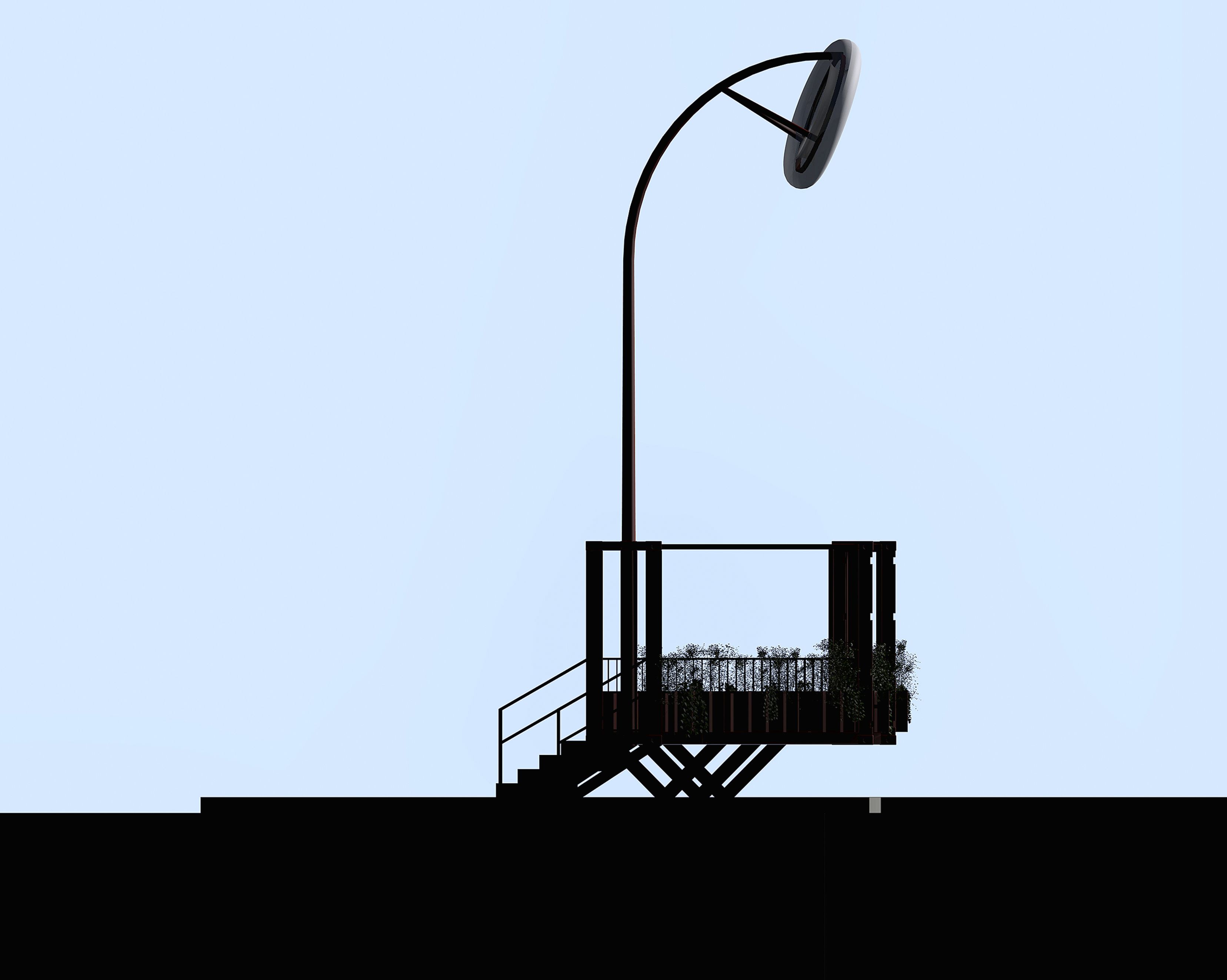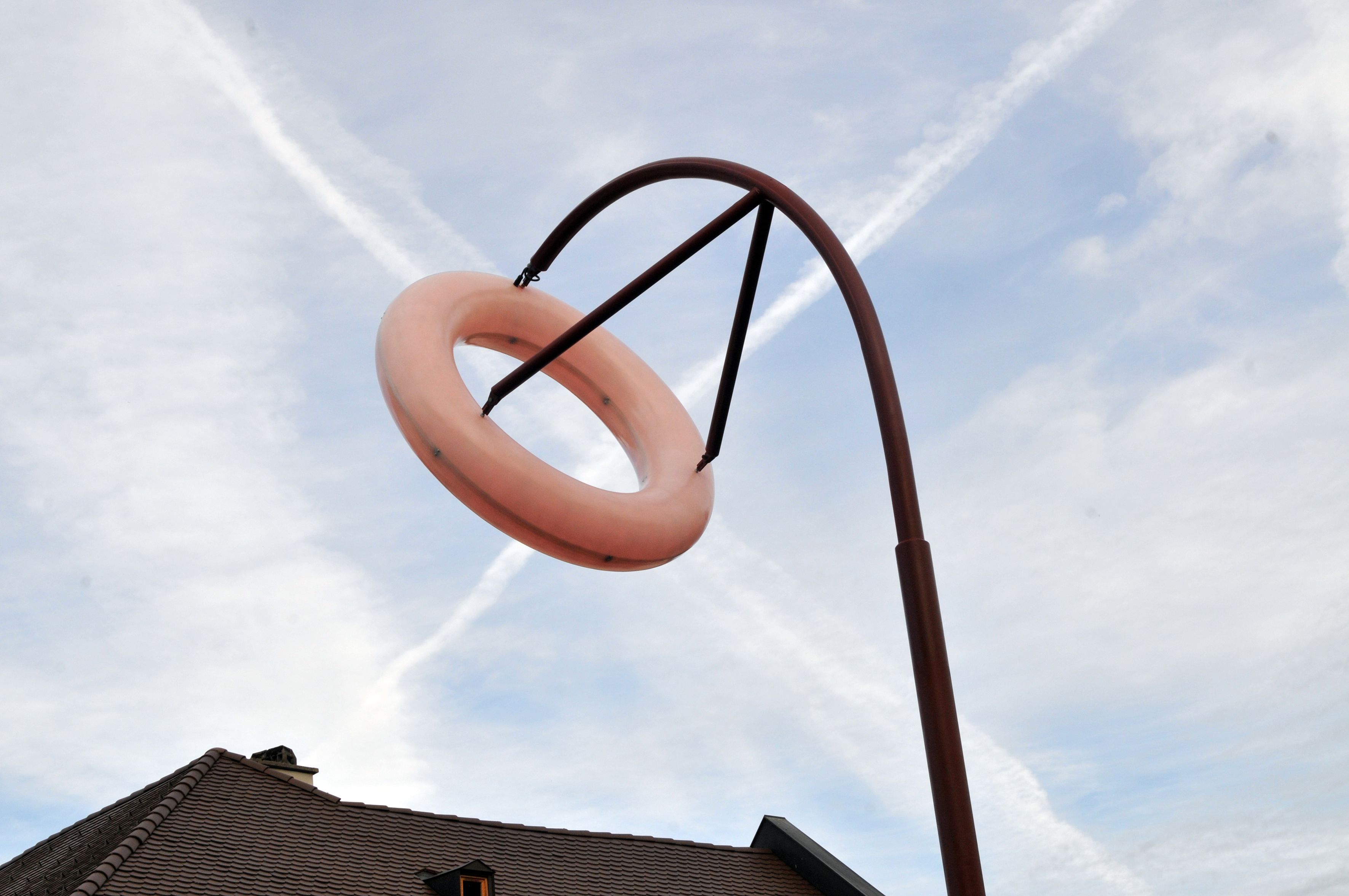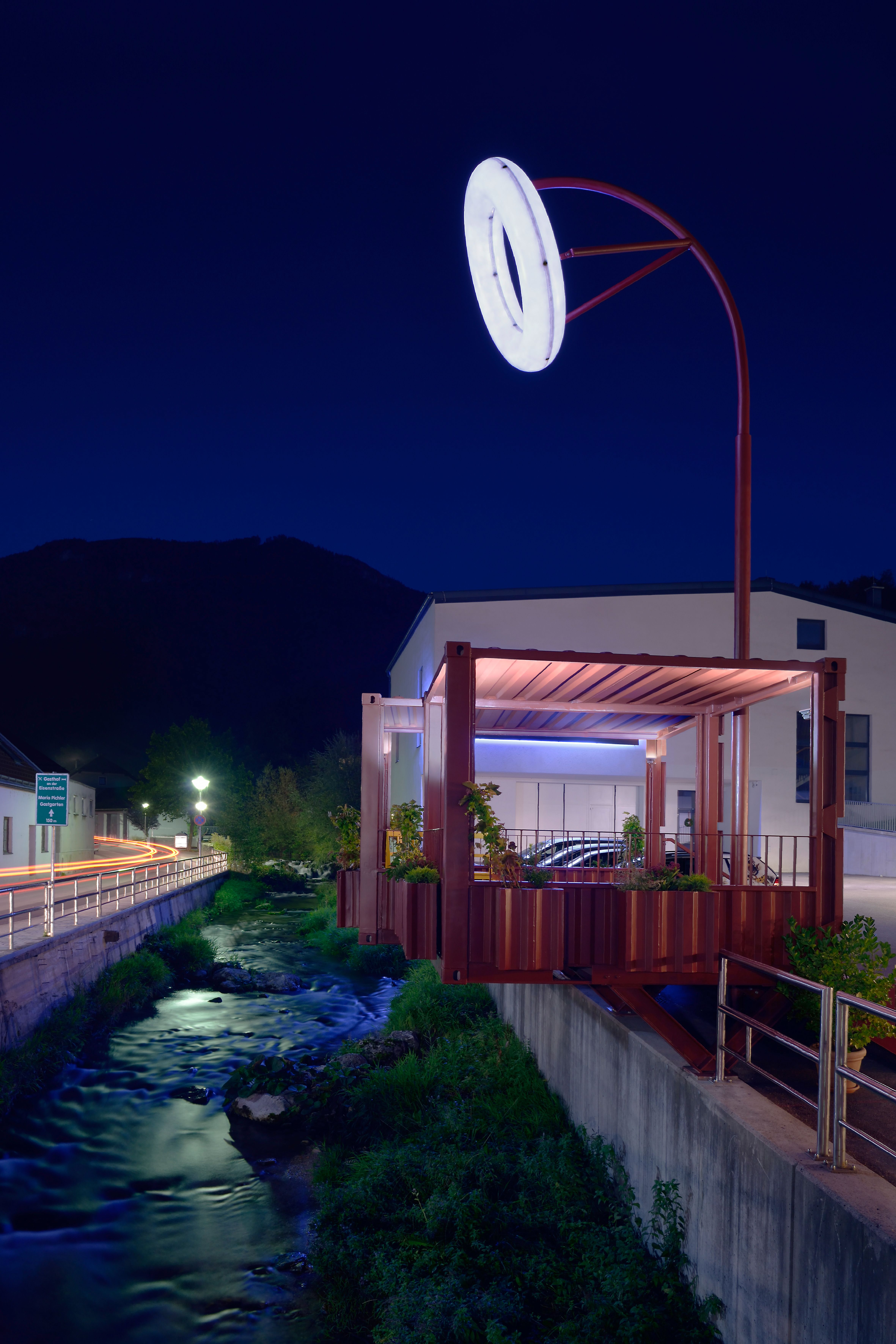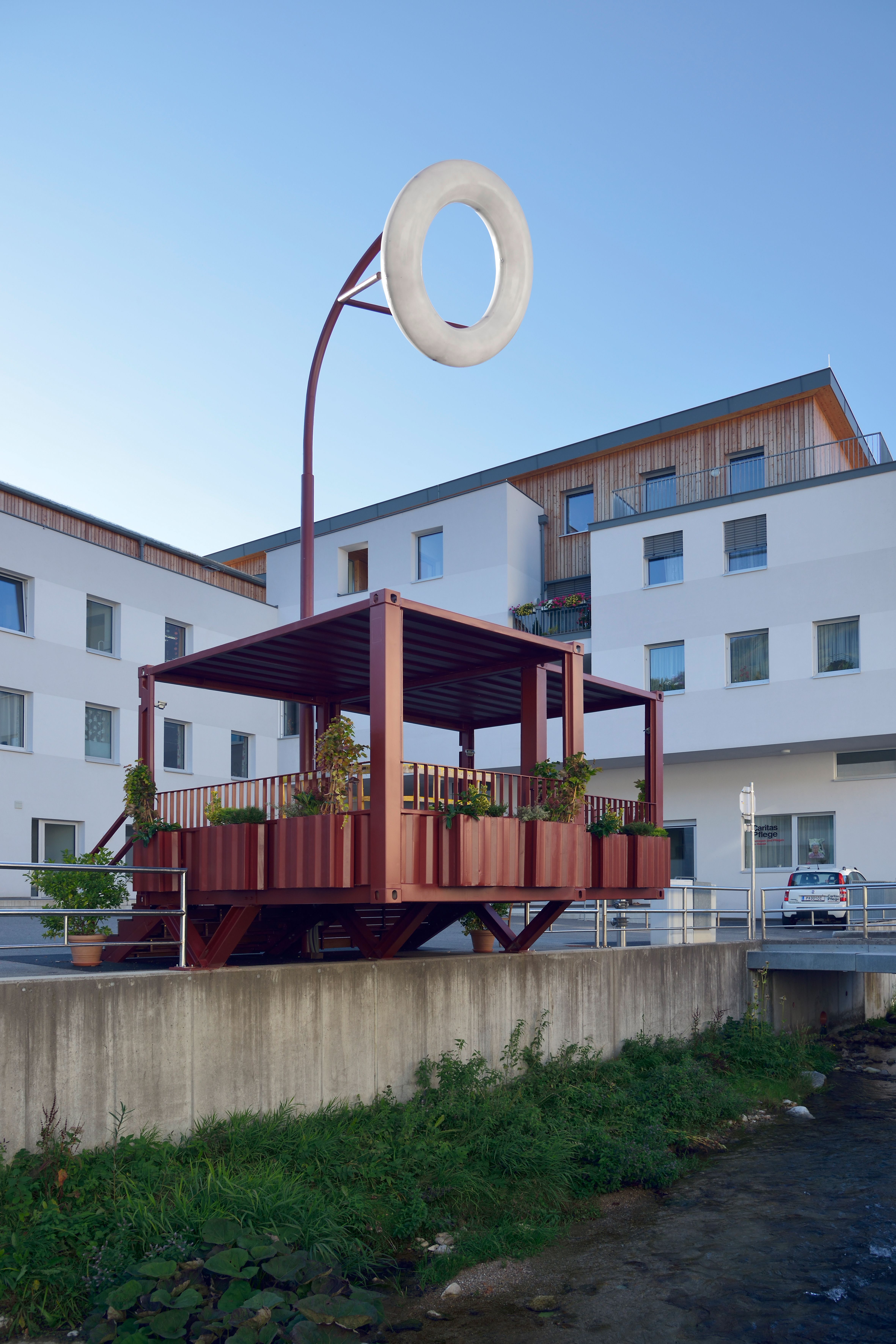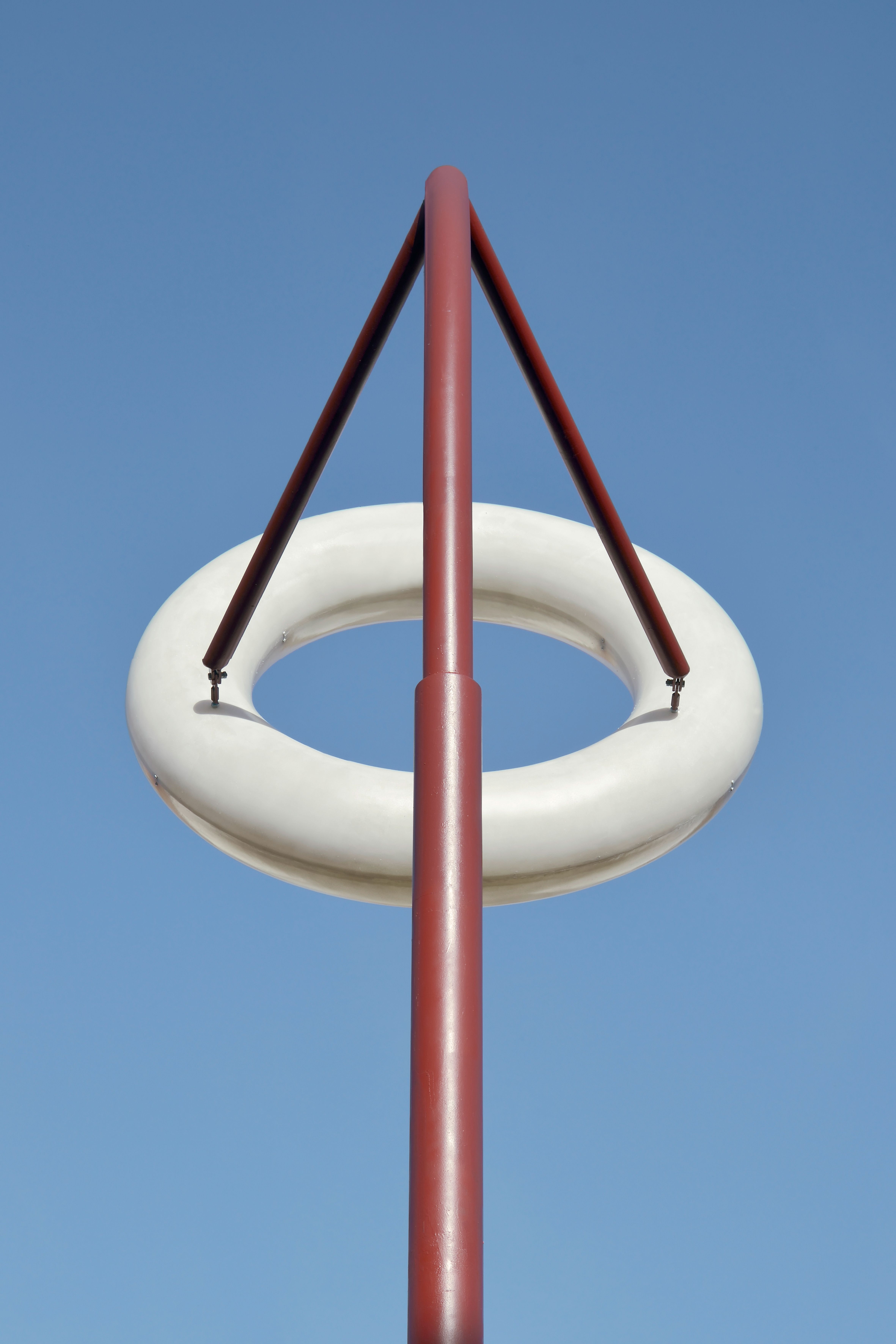Leo Schatzl
:
Plattform
Back
Information
Leo Schatzl’s installation next to the Haus des Lebens (whose name translates as the House of Life) in Ybbsitz is an open platform that can be used in different ways and perceived from various perspectives. Its pure architectural form is that of a stage, a meeting place, or a place to sit quietly, while its immaterial function is to provide a space, suspended over the creek, for intellectual freedom outside of the everyday life of the town. As a sculpture, it merges these material and immaterial levels together to symbolize many things. You can meet people there, or you can embark on an imaginary journey (naturally only in the sense of a fictional romantic idea of seafaring) and leave Ybbsitz, this small town in Lower Austria with a rich tradition of forging (forging in Ybbsitz is on the UNESCO’s list of intangible cultural heritage), sailing out into the wide world, only to return again at the end of the trip.
Leo Schatzl developed the idea for Plattform based on his precise observations and analysis of the architectural, demographic, and geographic environment of the public square situated between the music school and the Haus des Lebens, a residence that brings together many generations and provides care for the elderly. Schatzl approaches the artistic challenges of each public space like an archeologist, measuring and scanning the present day based on concrete sites, which he relates to local and global social developments. In Ybbsitz, he used the existing buildings and the cantilevered decks that seem to hover above the Prollingbach creek as orientation. He connects this old style of construction, which once served to create the smallest pieces of usable land by elevating it out of the water, with ideas ranging from economical, to romantic, and precarious – about current forms of mobility and temporary dwellings. For this, he turned to containers and platforms, exploring their social and political aspects. These are reflected in such euphemistic neologisms as the “disembarkation platforms” for refugee camps in Northern Africa, which express the cynical language of contemporary asylum policies.
An industrial metal container with the walls removed was reinforced by massive steel elements to form a roofed platform that juts out two meters from the banks of the creek. The steps leading from the parking lot to the platform can also serve as seats. The walls of the container were remodeled into flower boxes. A simple ring-shaped object hovers above the Plattform that can be interpreted as a universal symbol for inclusion and fellowship. Schatzl developed this light fixture especially for this installation. It consists of fiberglass-reinforced plastic mounted on a thin iron construction that measures about two meters in diameter. Attached to a nine-meter-high pole that curves at the top, the ring can be seen from afar in the dark and clearly marks the object as a kind of metaphoric harbor for coming together and community.
Schatzl worked with these container parts to create a framework construction that can be used and/or expanded by adding furniture or social interaction. The basic inventory consists of flower pots made of container parts, which can be used by locals for planting flowers. The rest is up to the townspeople, who can add other elements as they see fit. The sculpture not only encourages people to actively interact with it, but also to reflect on social developments. The artist focuses on the disappearance of everyday places of social communication, like country inns in rural areas, and the human isolation that this entails. Schatzl counters this development by setting a sign: He juxtaposes the need for local sites of communication with a longing for far-away places, creating a space in which the desire to feel connected and at home in a community can mingle with a sense of curiosity for what is foreign, thus bolstering the boldness of the world traveler.
Leo Schatzl has long been interested in nomadic architectural structures – containers, ships, cars – and mobility in general in his artistic work. He continuously removes objects from their traditional spaces (of meaning) and relocates them, letting them question their own meaning in a self-reflective way. In this process, he also conveys a fundamental skepticism toward physical and intellectual limitations and claims of territorial power. By creating empty spaces that can be filled with social functions or new ways of thinking, Schatzl’s objects always act as “negative sculptures,” as he calls them. In addition to the artist’s skeptical view toward society’s treatment of global human and economic movements today, his works also carry a romantic hope that spaces in which we can be free are still possible.
(Cornelia Offergeld)
